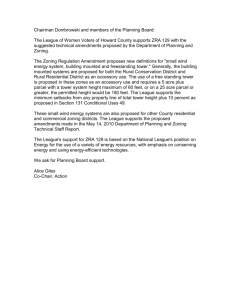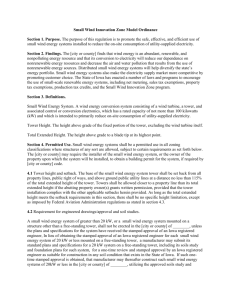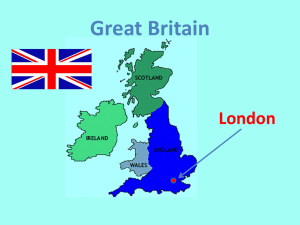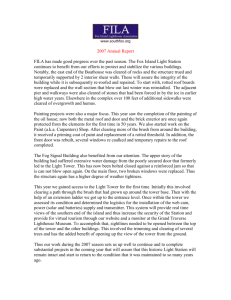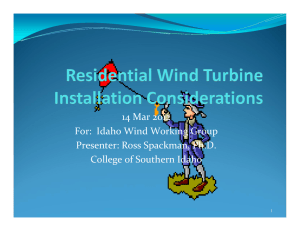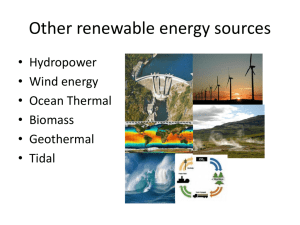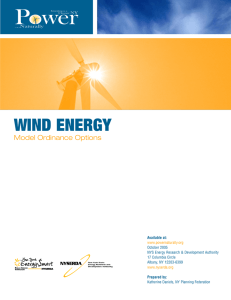Standardized Permitted Use Regulation for Small Wind Turbines
advertisement
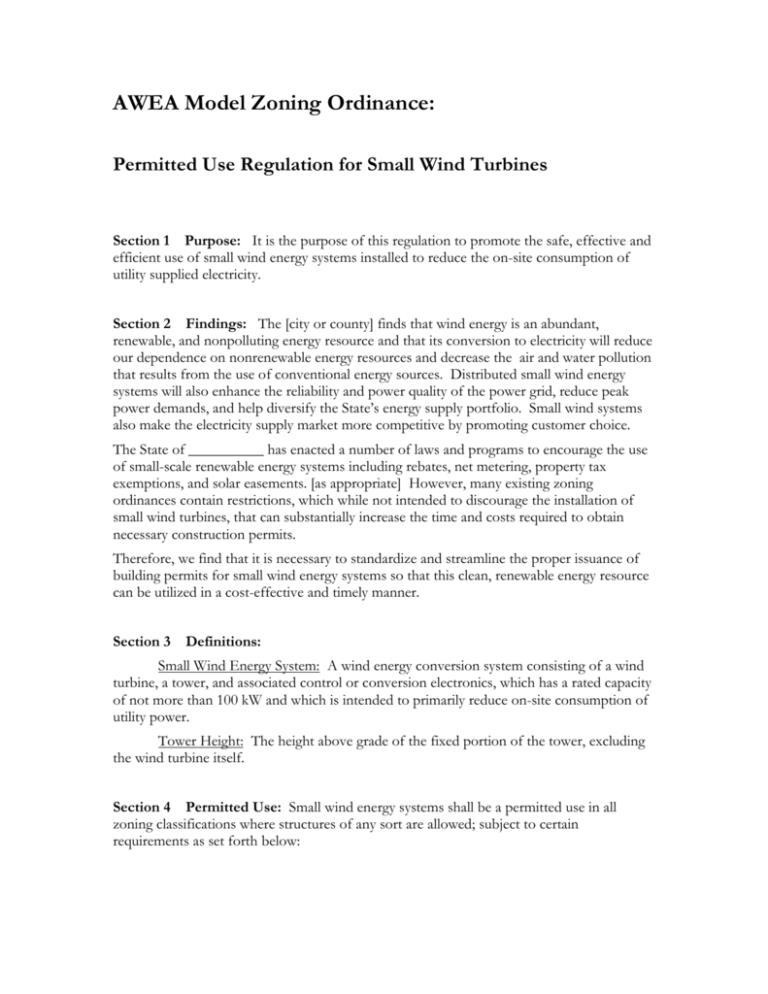
AWEA Model Zoning Ordinance: Permitted Use Regulation for Small Wind Turbines Section 1 Purpose: It is the purpose of this regulation to promote the safe, effective and efficient use of small wind energy systems installed to reduce the on-site consumption of utility supplied electricity. Section 2 Findings: The [city or county] finds that wind energy is an abundant, renewable, and nonpolluting energy resource and that its conversion to electricity will reduce our dependence on nonrenewable energy resources and decrease the air and water pollution that results from the use of conventional energy sources. Distributed small wind energy systems will also enhance the reliability and power quality of the power grid, reduce peak power demands, and help diversify the State’s energy supply portfolio. Small wind systems also make the electricity supply market more competitive by promoting customer choice. The State of __________ has enacted a number of laws and programs to encourage the use of small-scale renewable energy systems including rebates, net metering, property tax exemptions, and solar easements. [as appropriate] However, many existing zoning ordinances contain restrictions, which while not intended to discourage the installation of small wind turbines, that can substantially increase the time and costs required to obtain necessary construction permits. Therefore, we find that it is necessary to standardize and streamline the proper issuance of building permits for small wind energy systems so that this clean, renewable energy resource can be utilized in a cost-effective and timely manner. Section 3 Definitions: Small Wind Energy System: A wind energy conversion system consisting of a wind turbine, a tower, and associated control or conversion electronics, which has a rated capacity of not more than 100 kW and which is intended to primarily reduce on-site consumption of utility power. Tower Height: The height above grade of the fixed portion of the tower, excluding the wind turbine itself. Section 4 Permitted Use: Small wind energy systems shall be a permitted use in all zoning classifications where structures of any sort are allowed; subject to certain requirements as set forth below: 4.1 Tower Height: For property sizes between ½ acre and one acre the tower height shall be limited to 80 ft. For property sizes of one acre or more, there is no limitation on tower height, except as imposed by FAA regulations. 4.2 Set-back: No part of the wind system structure, including guy wire anchors, may extend closer than ten (10) feet to the property boundaries of the installation site. 4.3 Noise: Small wind energy systems shall not exceed 60 dBA, as measured at the closest neighboring inhabited dwelling. The level, however, may be exceeded during short-term events such as utility outages and/or severe wind storms. 4.4 Approved Wind Turbines: Small wind turbines shall have been approved under the Emerging Technologies program of the California Energy Commission or any other small wind certification program recognized by the American Wind Energy Association. Non-certified small wind turbines must submit a description of the safety features of the turbine prepared by a registered mechanical engineer. 4.5 Compliance with Uniform Building Code: Building permit applications for small wind energy systems shall be accompanied by standard drawings of the wind turbine structure, including the tower, base, and footings. An engineering analysis of the tower showing compliance with the Uniform Building Code and certified by a licensed professional engineer shall also be submitted. This analysis is frequently supplied by the manufacturer. Wet stamps shall not be required. 4.6 Compliance with FAA Regulations: Small wind energy systems must comply with applicable FAA regulations, including any necessary approvals for installations close to airports. 4.7 Compliance with National Electric Code: Building permit applications for small wind energy systems shall be accompanied by a line drawing of the electrical components in sufficient detail to allow for a determination that the manner of installation conforms to the National Electrical Code. This information is frequently supplied by the manufacturer. 4.8 Utility Notification: No small wind energy system shall be installed until evidence has been given that the utility company has been informed of the customer’s intent to install an interconnected customer-owned generator. Off-grid systems shall be exempt from this requirement.


